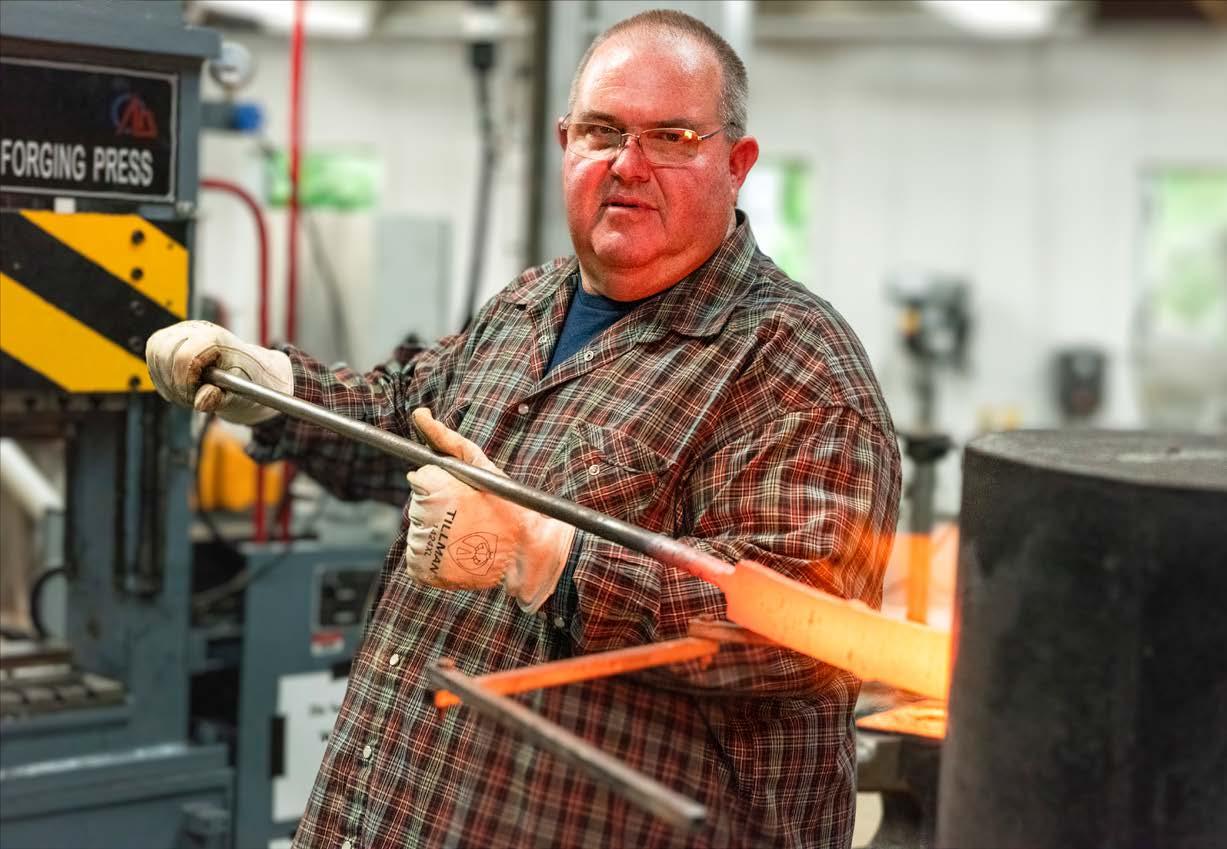
6 minute read
A Cut Above: The Knives of Jim Bob Lamb

The Knives of Jim Bob Lamb
BY DAVID NILLES
THERE IS A PLACE JUST NORTH OF HOPE, ARKANSAS, WHERE VISITORS CAN STEP BACK IN TIME TO THE 1800S. It is Historic Washington State Park. The park features the largest collection of 19th-century buildings in the state. An important stop on the Southwest Trail, James Bowie, Sam Houston and Davy Crockett traveled through the area. It is here in Washington where James Black, a local blacksmith, forged the legendary Bowie knife.
Over 150 years later, the site still boasts some of the best bladesmiths to be found. That may be because Washington is home to the James Black School of Bladesmithing and Historic Trades.
Among the knife makers that have passed through its doors is ArDOT’s own Jim Bob Lamb. Lamb is the Area Maintenance Supervisor for Howard County and has been with the Department for 28 years.
LEARNING FROM ONE OF THE BEST
Lamb became interested in knife making at an early age. “My mentor, James Cook, lived three houses down the road from me on Highway 26 here in Howard County,” Lamb shared. “I was about 12 years old. Mr. Cook was well into learning the trade and was becoming a Journeyman. I asked him if he would teach me to make knives. He said ‘sure, come on!’ I went down there and he showed me how to light a coal forge and started teaching me how to hammer out a blade. We then discussed making a handle for it. I still have that knife today.”
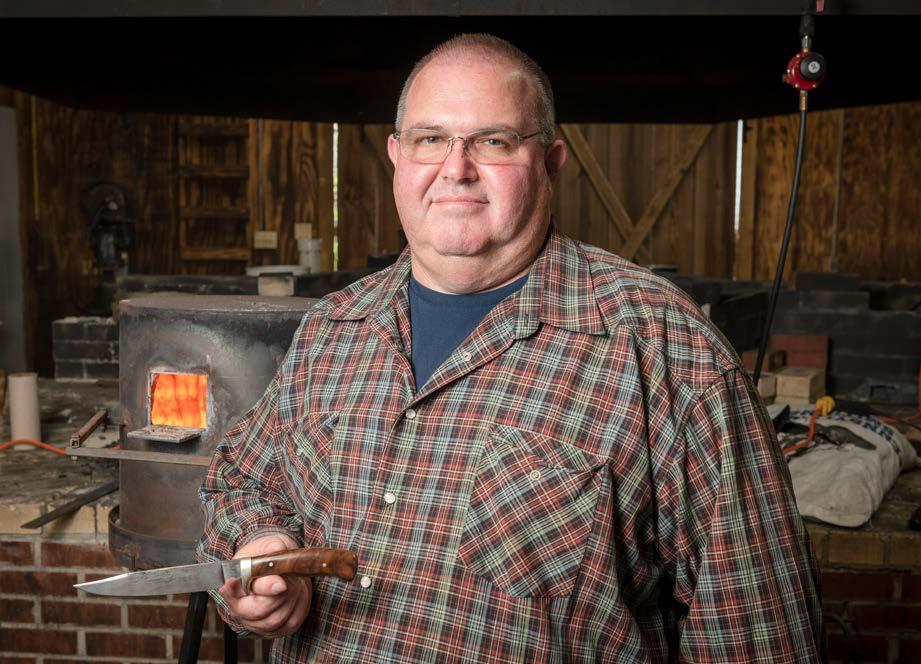
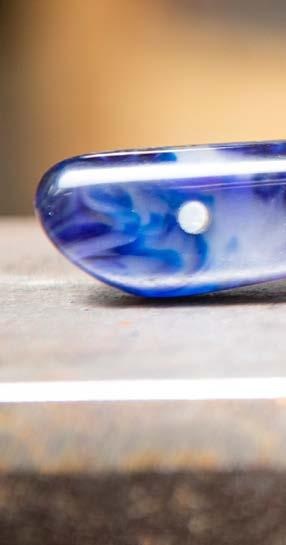

Unbeknownst to him, Lamb was learning from one of the best. Today, Cook has been recognized as an Arkansas Living Treasure. The Arkansas Living Treasure program, presented by the Arkansas Arts Council, annually recognizes an Arkansas artist who excels in the creation of a traditional craft and who actively preserves and advances his or her craft through community outreach and educating others.

COMING BACK STRONG
Lamb got away from the craft for many years but today, some 35 years later, he has come back in a big way. “I got to watching the television show ‘Forged in Fire’ and it rekindled me,” Lamb explained. “I had some spare time on my hands during the Covid stage. I did a little YouTubing and got back into it.” All these years later, Lamb is still enjoying guidance from Cook. “I went to him and he guided me,” Lamb shared. “After I made my first one, I messed it up a little. Mr. Cook told me to chalk it up because it was no good. It broke my heart but I moved on to the next one.”
For his next knife, Lamb enjoyed guidance from Jerry Fisk. Like Cook, Fisk teaches at the James Black School and has been recognized as the first bladesmith to be named a National Living Treasure.
CRAFTING A COLLECTION
Today, Lamb has completed over a dozen knives. A few are from kits, but the majority he has crafted from scratch. He also makes the sheathes that house his knives.
One knife he keeps for his own daily use. Others have been made for people who have taken notice of Lamb’s special talent. “I made one for fellow ArDOT employee Scott Clark who used to work here in District 3. He admired one I made and asked that I make him a similar one. It features a bull cutter design. He specifically asked that the handle be blue. “I also made one for my stepmother. It was the first one I made and the first one is always close to your heart. She pried it out of me. Dad told me yesterday he does not have a clue where it is, ‘she won’t let me touch it.’ That tickled me.”
Lamb always tries to personalize the knives he makes for others.
“I like to take the handles and try to personalize everything if I know who it is going to,” Lamb explained. “For example, for a retired state trooper I featured a blue handle. He is an American so red, white and blue colors are seen. That is also our ArDOT colors. There is a black and blue band that is a ‘Back the Blue’ band. He is a horseman and so I featured a horse rasp. On the sheath, I featured a star to represent the Arkansas State Troopers.”
THE CHALLENGES OF KNIFE MAKING
For Lamb, it can take anywhere from 10 to 40 hours to make one knife.
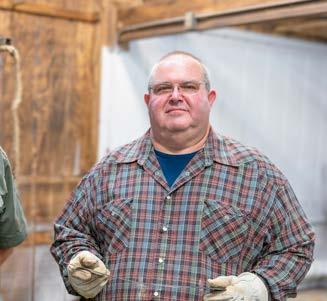
James Cook joins Lamb in the James Black School of Bladesmithing.
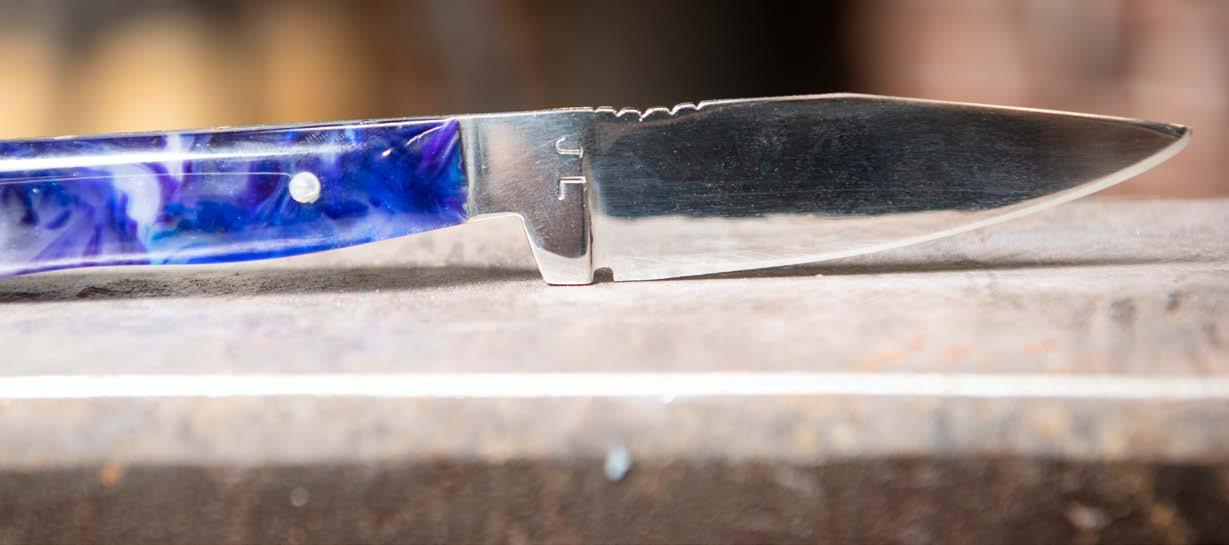
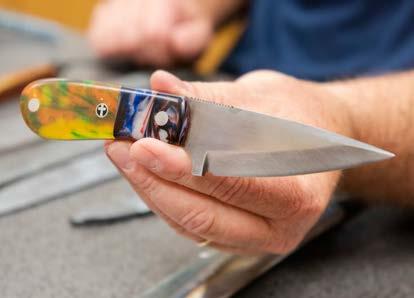
stated. “The blades are already made. Just follow the directions and you can come out with a knife in a couple of hours.”
To craft one on your own takes a great deal more time and talent. “You hammer out the blade that you have designed, then grind it down and put it in the fire for several processes, and then put your edge on it and sharpen it.

There is no finer place to learn the art of bladesmithing than the James Black School in Washington. Act 818 of 2019 designated Washington, Arkansas, as the “Birthplace of the Bowie Knife, Arkansas Heritage Site” and designated the University of Arkansas Hope-Texarkana (UAHT) to develop and operate a school of bladesmithing located in Washington. The purpose is to promote and protect the art of bladesmithing and the Bowie Knife crafted in Historic Washington. UAHT works collaboratively with Historic Washington State Park and the Arkansas Department of Heritage to teach and celebrate Arkansas’ history, bladesmithing and other heritage trades.
Lamb recently completed the program offered at the school. “I highly recommend the school to everybody interested in the craft whether they are starting or have been at it for years.” Jennifer Teresa is the school’s Dean of Business, Trade and Industry. “We offer a Certificate of Proficiency in Bladesmithing,” she shared. “There are five required classes with each class running a semester long. We can take up to eight students per semester.”
A summer semester offers a different set of classes including one in axe making. Students at the school are, without a doubt, learning from the best. “Knife making never ends as far as the learning,” Cook explains. “There is always a new opportunity to add to what you are already doing. You never stop.” Having graduated from the school, Lamb enthusiastically explained his final exam.
“Once completed, your blade must be sharp enough that it will cut through a one-inch, free-hanging sisal rope. Then you must cut a 2” x 4” all the way through. Your edge must not chip or roll. Then if you can shave the hair off your arm, you’ve made a good blade. The final test comes as you put it in a vice and pull the blade back towards you to 90 degrees. If the blade breaks, you do not pass. You must start all over. If you successfully pull it all the way back, you then lighten up and allow it to return to a vertical position. The test indicates you followed the instructions of proper heat-treating, tempering and thermal cycling. Let it be mentioned, Lamb’s blade passed this test for a third time while our magazine crew was there!
There are more knives in Lamb’s future.
“The more knives I make, the more that will come, just like driving a car.” Just by looking at his collection, it is evident that Lamb has learned from the best.







